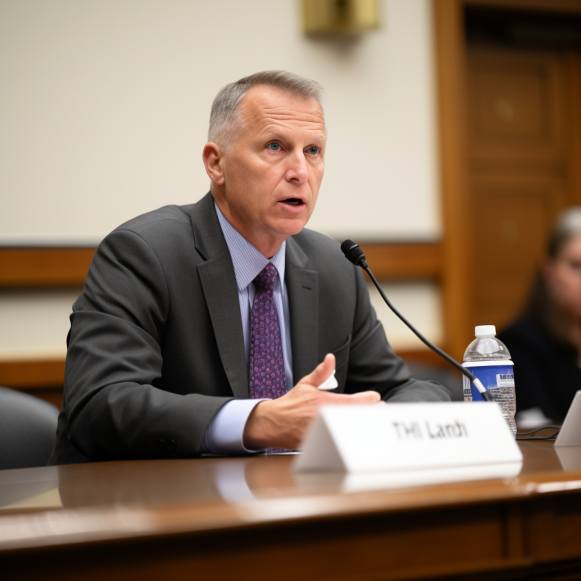As younger children increasingly die by suicide, better tracking and prevention is sought

Many experts are calling for lowering the screening age for suicide ideation in children.
If you or someone you care about is in crisis, please call the National Suicide Prevention Lifeline at 988 or text HOME to 741741.
Jason Lance thought January 21, 2010, was just another day until the phone call came.
Montana, his 9-year-old son, had been dropped off at Stewart’s Creek Elementary School in The Colony, Texas, that morning.
“There were no issues at home.” He was astute. “He wore his heart on his sleeve and talked and talked and talked,” Lance explained. It was “just another ordinary day.” Kisses and goodbyes were exchanged, and he said, ‘I love you, Daddy.'”
A few hours later, school officials called to inform them that Montana had committed suicide while locked in the nurse’s room.
“I knew he had some issues going on in school, but I never seen it coming,” stated Lance. His shock and grief were exacerbated by the realization that there could have been more signs that his son was in trouble.
As children across the country return to school this fall, it is critical to focus on their mental health as well as their academics. According to the Centers for Disease Control and Prevention and recent studies, suicide is the seventh- or eighth-leading cause of death among children aged 5 to 11. And statistics show that rates among younger children have risen in the last decade, particularly among Black males.
According to Paul Lipkin, a pediatrician at the Kennedy Krieger Institute in Baltimore and a specialist in developmental disabilities such as autism, “historically we thought that suicide is a problem of teens and adults, but younger children are expressing similar thoughts that may have been ignored previously.”
Many experts are calling for the screening age for suicidal ideation in children to be lowered, as well as the development of more effective early suicide risk detection and targeted prevention strategies. Pediatricians, teachers, and parents all work with children at a young age to help them build resilience and identify and manage stress.
According to studies, young children learn about death and suicide from television or other media, discussions with other children, or exposure to death through a family or community loss.
“Pediatric suicide wasn’t on our radar for decades and may have been underreported,” said Holly Wilcox, president of the International Academy of Suicide Research and a professor at the Johns Hopkins Bloomberg School of Public Health in Baltimore. “The truth is that now we can do stuff about it.”
The 136 reported suicides among 5- to 9-year-olds from 2001 to 2021 were almost certainly an undercount.
“Counts are often incomplete, and causes of death may be pending investigation, resulting in an underestimate relative to final counts,” said Margaret Warner, senior epidemiologist at the CDC.
The issues with those figures are significant because, according to Warner, “if we are missing deaths or don’t have all the information leading to them, we can’t properly develop programs to prevent future deaths.”
As a result, coroners and medical examiners are working together to improve the quality and consistency of pediatric death investigations across the country.
Leaders in suicide prevention hope that the increased focus on pediatric suicide will help to reduce the rising suicide rate among people aged 10 to 24 in the United States, where suicide is the second-leading cause of death, according to the CDC.
Some of the increase in mental health issues among children has been attributed to the pandemic’s isolation and lack of school structure. According to a November 2020 CDC report, pediatric emergency room visits for children aged 5 to 11 increased by approximately 24% beginning in April 2020.
Other factors, such as neurodiversity or having a psychiatric disorder, can make a child more suicidal.
A study published in Frontiers in Public Health in February found that being the victim or perpetrator of bullying is a risk factor for suicide, even when other risk factors were controlled for.
Montana Lance was diagnosed with attention deficit hyperactivity disorder and dyslexia, and she was frequently bullied at school.
Lewisville Independent School District officials declined to comment on Montana’s death. His parents sued the school district, but the case was dismissed, and the district was found not to be liable for his death.
Suicide is complicated, but recent research has discovered that there are things that parents, teachers, pediatricians, and caregivers can do to help protect children from it.
According to Lisa Horowitz, a pediatric psychologist and National Institute of Mental Health staff scientist, “it’s never too early to start a conversation with kids about recognizing mental health distress and doing what we can to help them have better coping strategies and foster resilience.”
According to a study published in the journal Frontiers of Psychiatry in 2022, developing resilience in children can help them cope with stress.
“I don’t want people to panic but just want them to be vigilant about their children,” stated Horowitz.
That vigilance can be “tricky” at times because depression can manifest differently in younger children. They may act out, be more irritable, and not show symptoms in the same way that teens and adults do, according to Wilcox.
“There aren’t enough studies on how to best identify preteens and children at risk of suicide.” “Sometimes you just have to trust your instincts about these things,” she explained.
Parents should ask their children about their feelings if they are upset, according to Tami D. Benton, psychiatrist-in-chief, executive director, and chair of the Department of Child and Adolescent Psychiatry and Behavioral Sciences at Children’s Hospital of Philadelphia.
“Parents should not talk their children out of their feelings, nor should they give them examples of when it happened to them, nor should they minimize their feelings.” “It knocks them down,” she explained.
Parents and children should collaborate to devise a strategy, but they should also teach their children that they can handle these situations, according to Benton.
When parents are unsure what to do in difficult situations, they should seek advice from their child’s pediatrician.
The American Academy of Pediatrics recommended universal screening for suicide risk in all children aged 12 and older, as well as when clinically indicated in children aged 8 to 11. There are no screening tools that have been validated for use in children under the age of eight. However, according to Horowitz, younger children can still be assessed and evaluated for suicide risk.
Schools can also play an important role in the prevention of suicide.
“I am the sole school counselor in my building,” Meghan Feby, a school counselor in the Colonial School District in New Castle, Delaware, explained. It is a difficult task. That is why there are supports in place that have eyes where mine cannot… on school computers. Using software strategies such as GoGuardian Beacon can really help fill in gaps and provide support.”
The software detects keywords and phrases that may indicate a child is considering suicide and has already been used to intervene when children using district computers exhibited concerning behavior. It is monitoring the activities of over 6.7 million public school students in kindergarten through 12th grade who use school computers.
Some schools have expressed concerns about implementing such software because some parents find it intrusive.
The Good Behavior Game, a decades-old behavior management intervention for children in first and second grades, is used in many schools, and it has also been used in higher grades. Peer pressure is used in the team-oriented classroom curriculum to encourage students to be attentive, engaged, and collaborative. Wilcox and colleagues studied the extensive participation of thousands of students and discovered that it reduced suicidal thoughts and behaviors.
Children who played the game were half as likely as young adults to report suicidal thoughts and roughly one-third less likely to report a suicide attempt.
Lance stated that Montana’s suicide changed his life forever.
“It’s not proper to bury your children.” “You’re supposed to be buried,” he explained. “All this attention on the mental health status of children these days is not going to bring my child back, but it can stop another family from suffering.”





